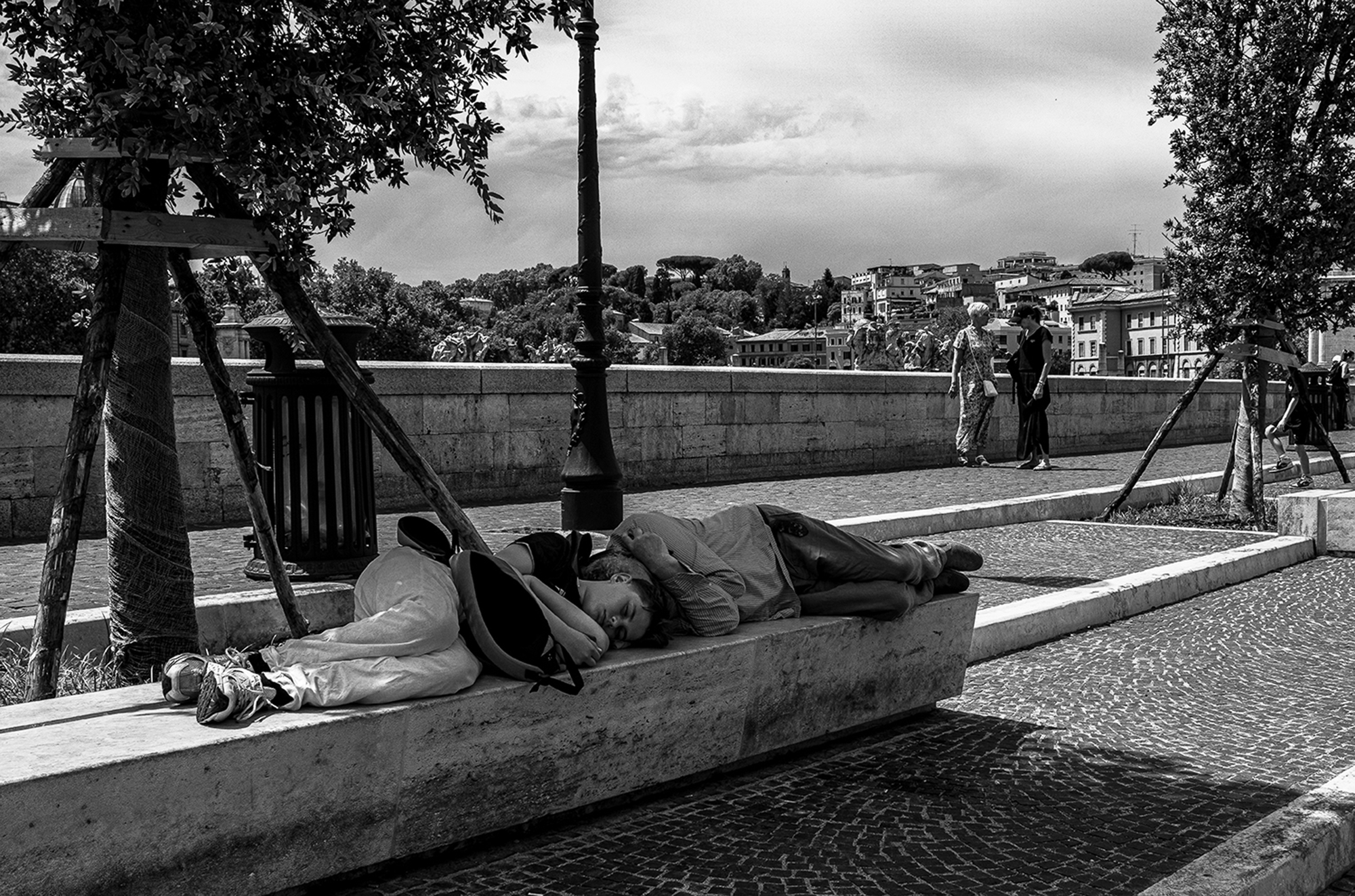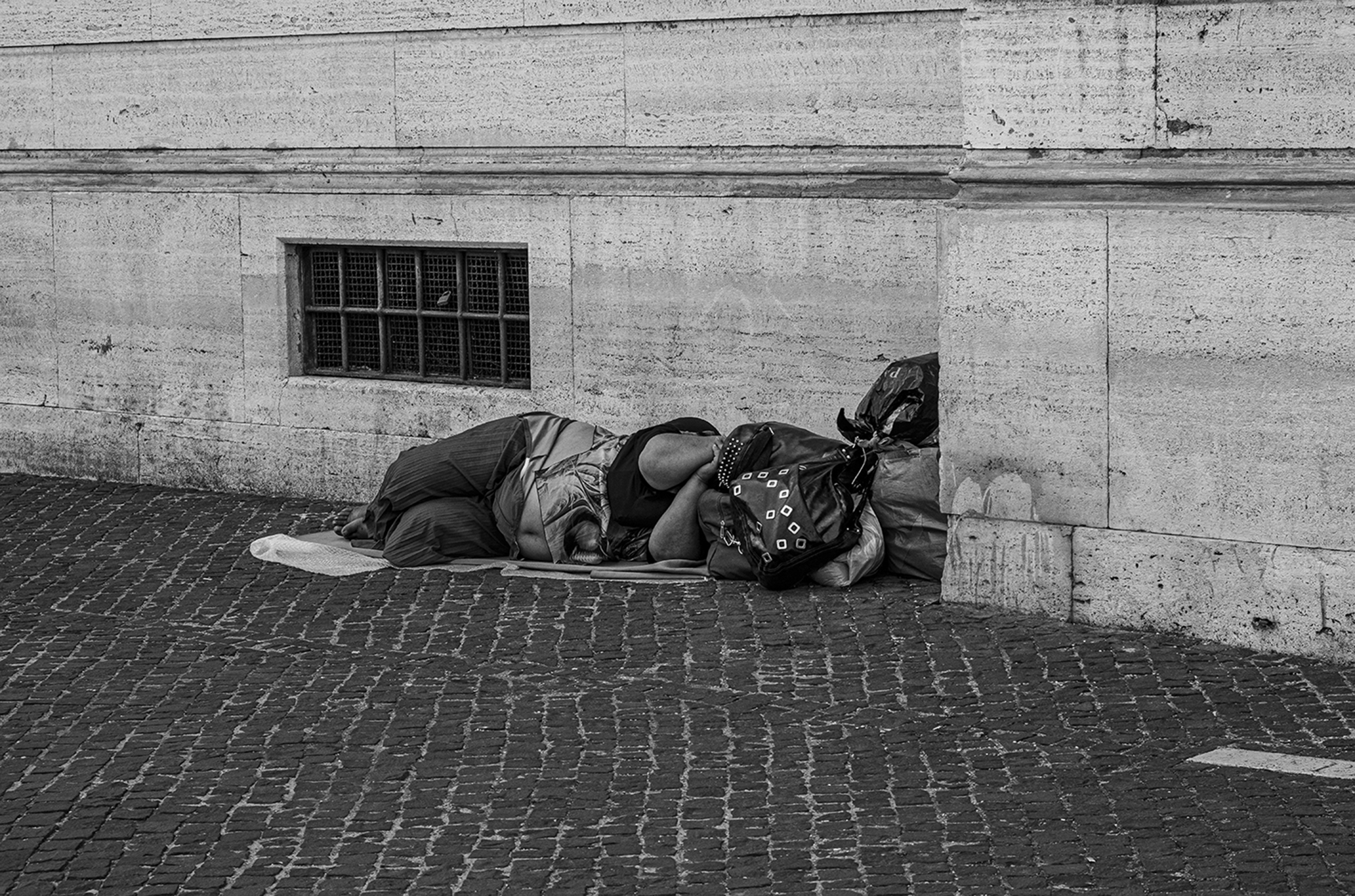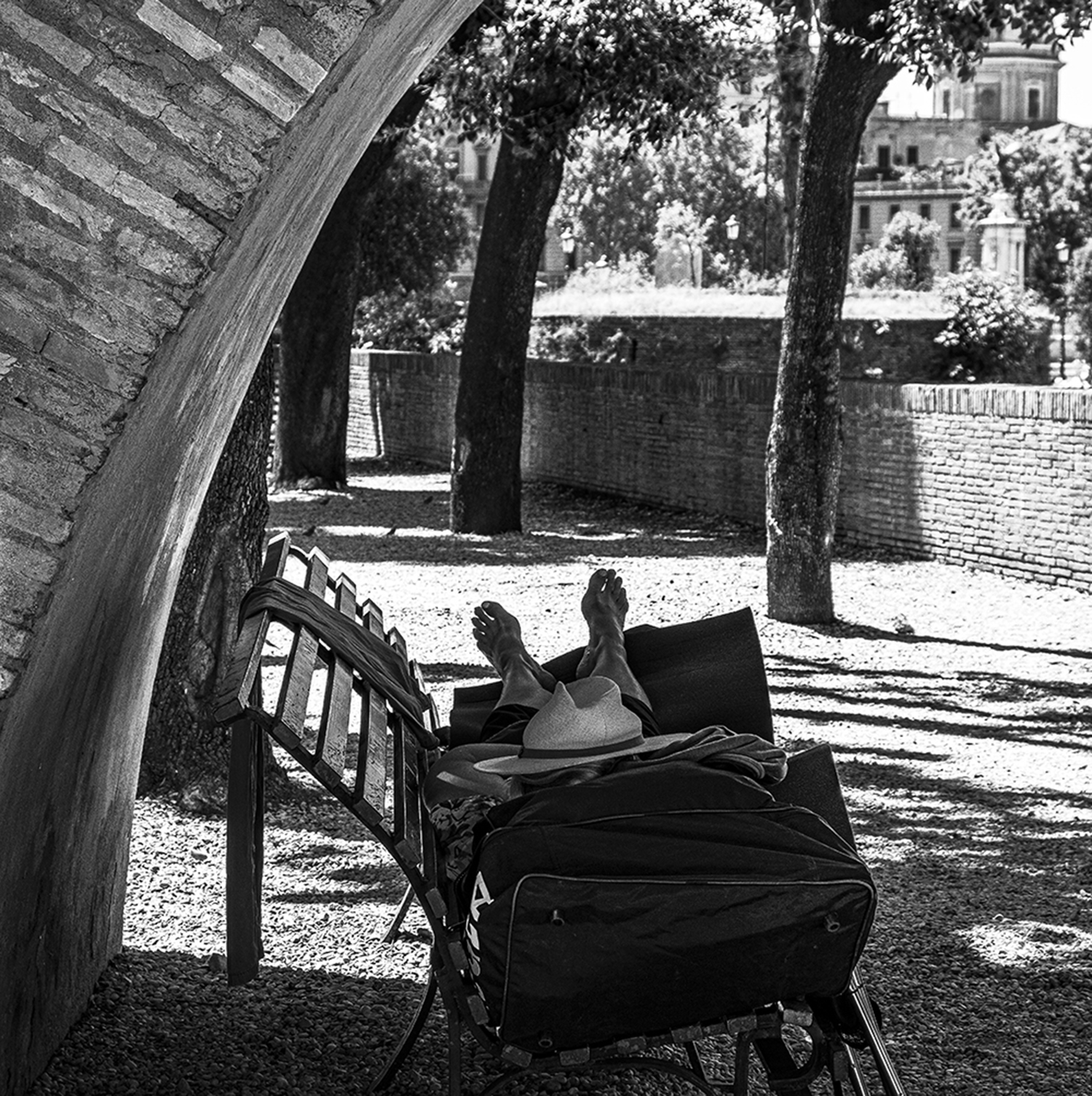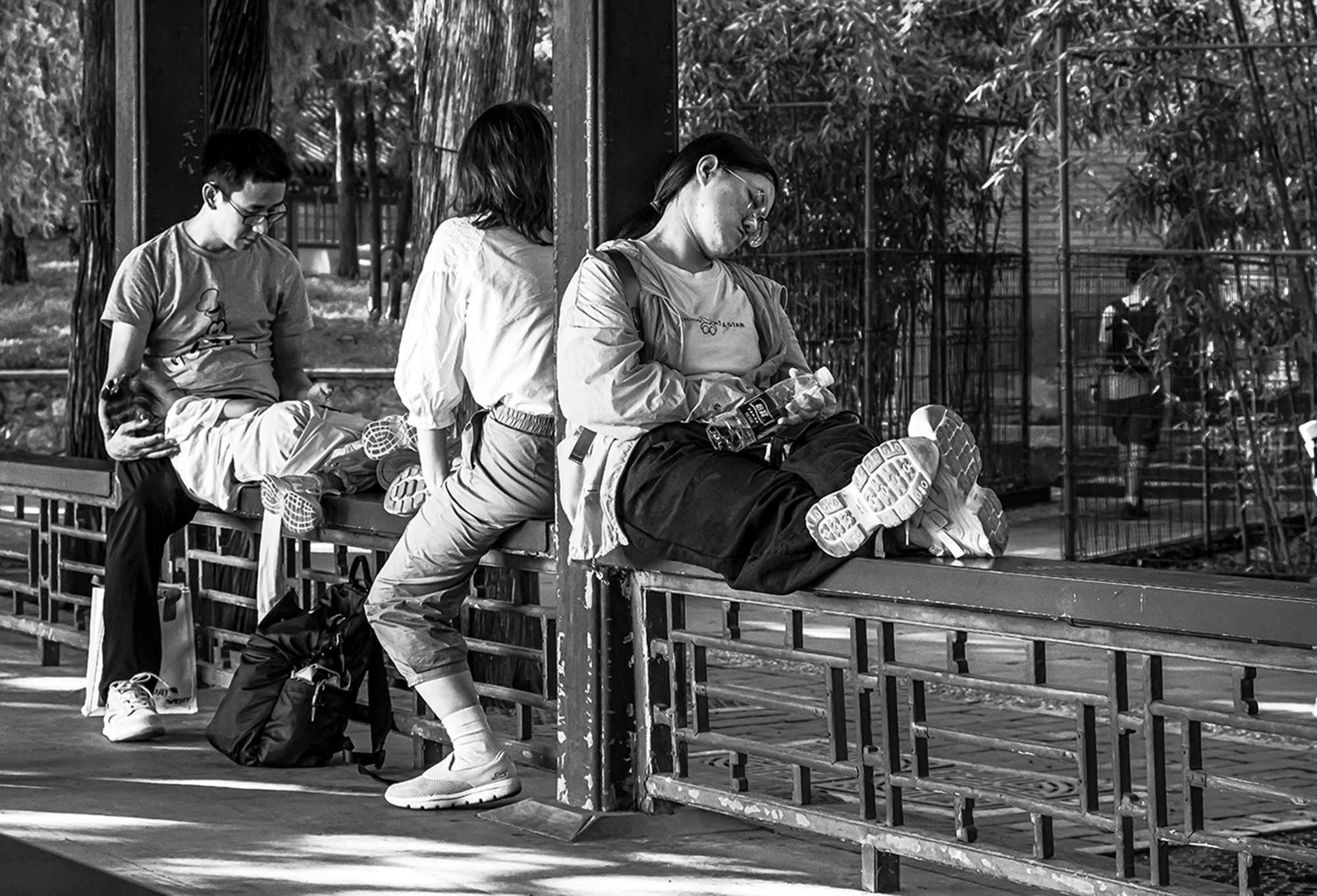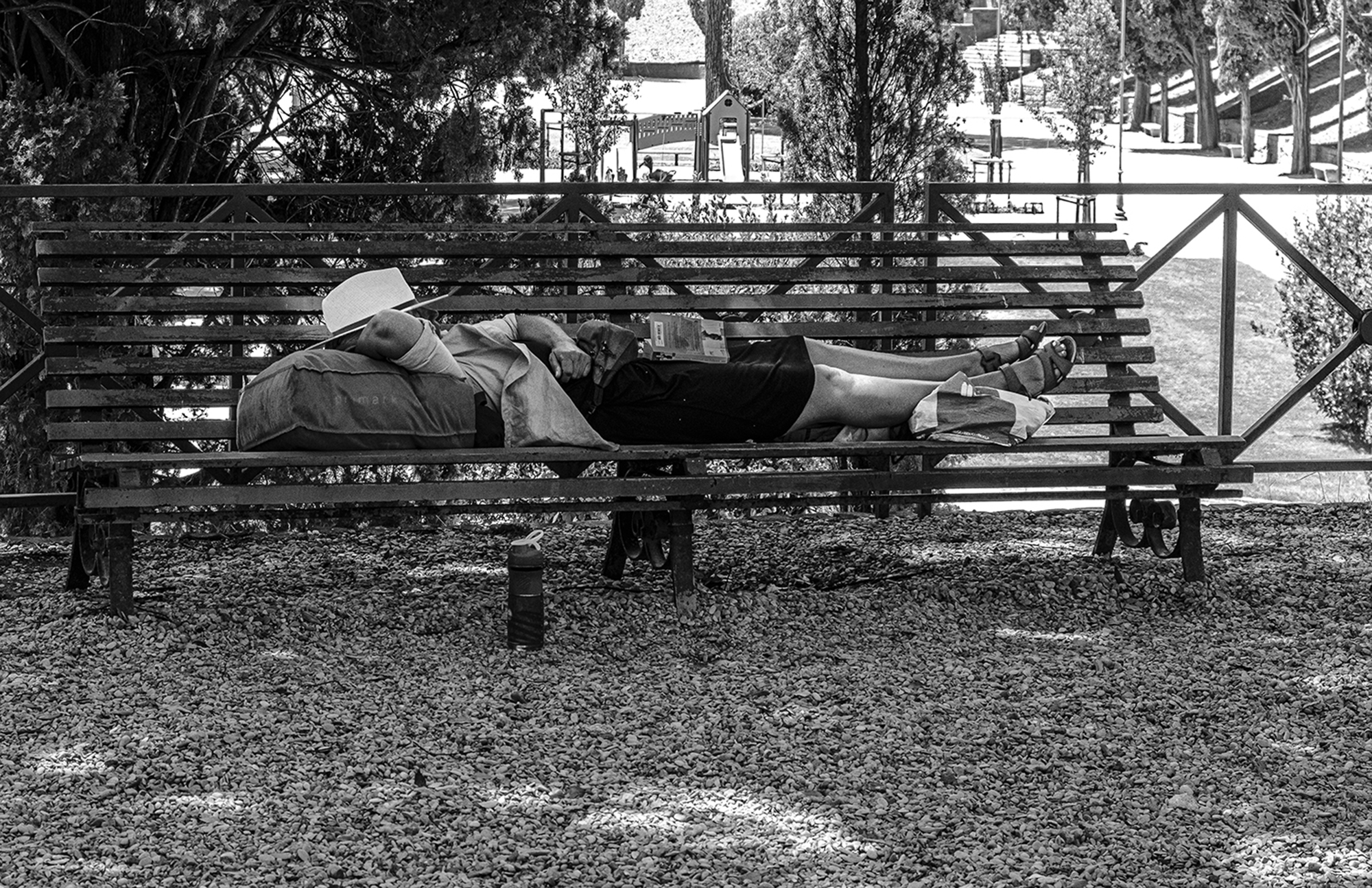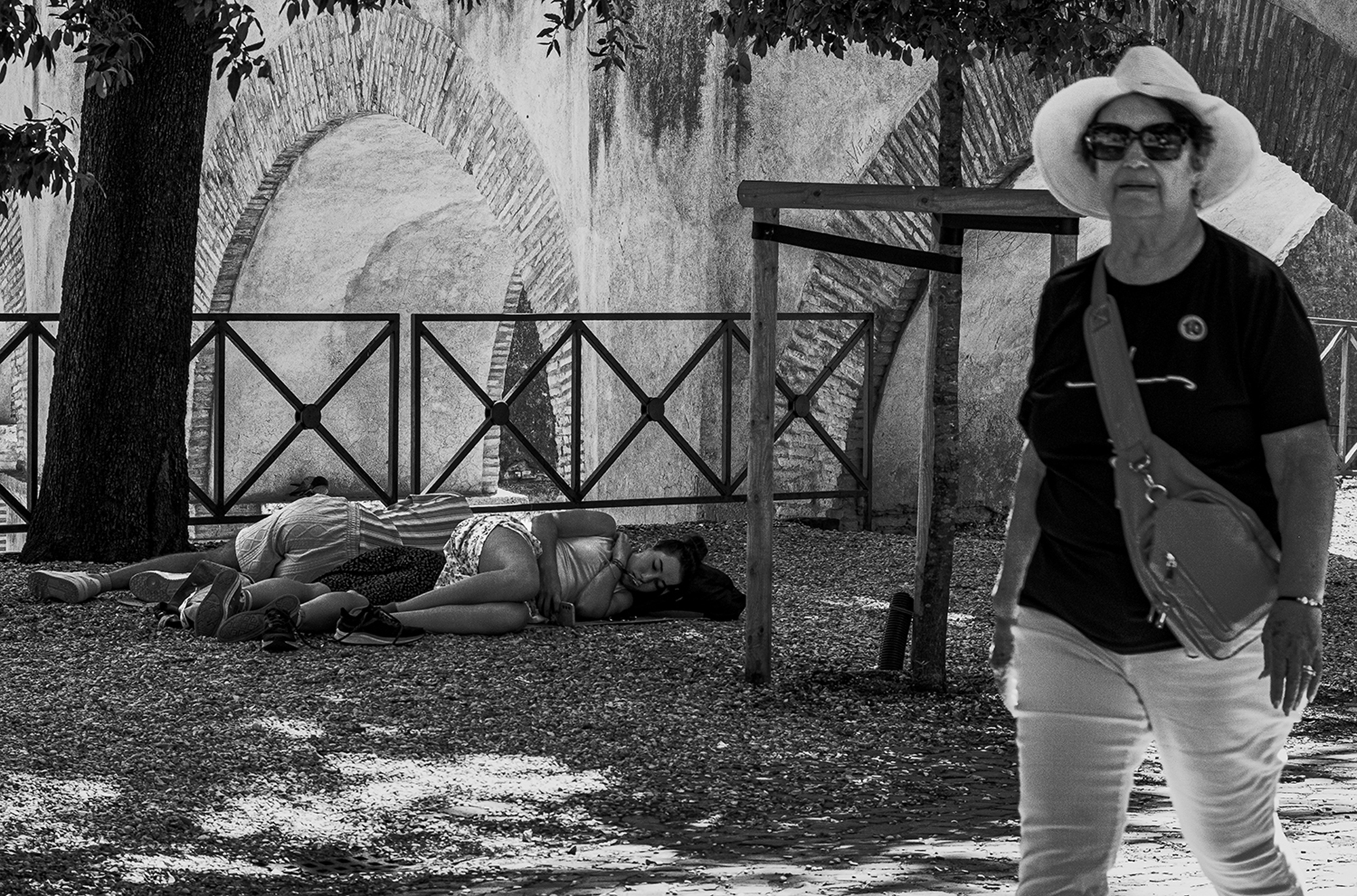Seeing people sleeping on the street, whether they are homeless people, tourists overcome by the heat, workers taking advantage of a break or fathers watching over their tired children, arouses in me a mixture of tenderness and alarm.
Those who are in this state of unconsciousness on the public street seem so fragile, exposed without the defence of their senses to every insult of chance, but at the same time also confident that nothing bad can happen to them during this momentary absence from the world.
It seems to be a paraphrase of a more general human condition, even when awake.
And it is precisely this temporary absence from the world that disturbs us to some extent when we see people sleeping, especially in places not designated for rest: unconscious bodies, perhaps abandoned in ridiculous positions, which bring to mind other, far more macabre and dramatic images of those who, certainly against their will, have left the world or been forced to depart permanently.
On the other hand, without bothering Hamlet with ‘to die, to sleep, perhaps to dream…’ in our way of feeling and speaking there is a continuous reference made up of idiomatic phrases between the two conditions: from the euphemisms “he is dead but seems to be sleeping”, “he fell asleep without suffering” to the phrase “sleeping like the dead”, it is all a reference from one state to the other.
With this in mind, I have collected the photographs of sleepers that I present here: with human sympathy, attention to some inconsistencies, as if an unknown epidemic of drowsiness had suddenly struck the subjects, but with the mind’s eye focused on other, more terrible images.

